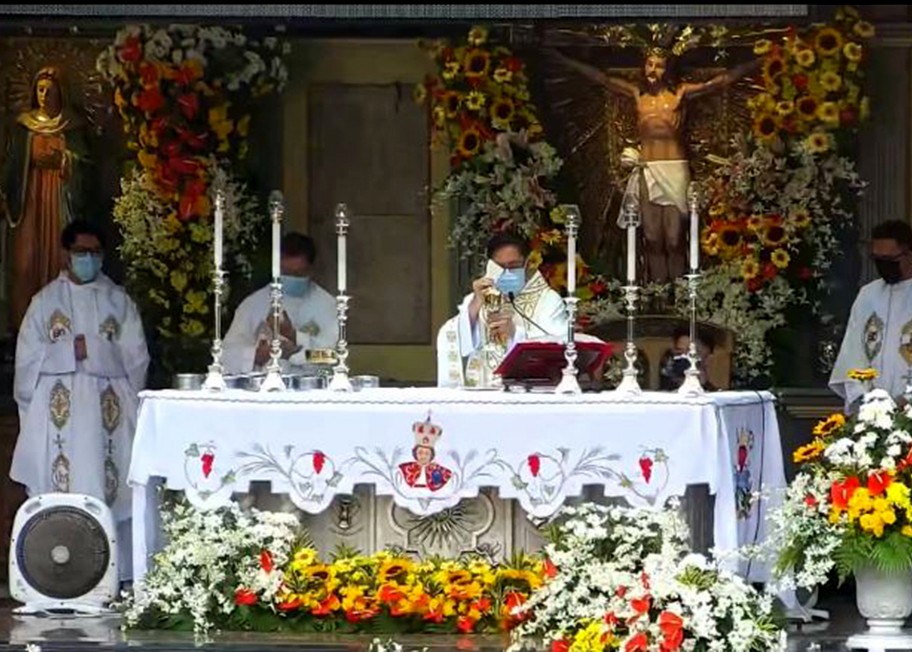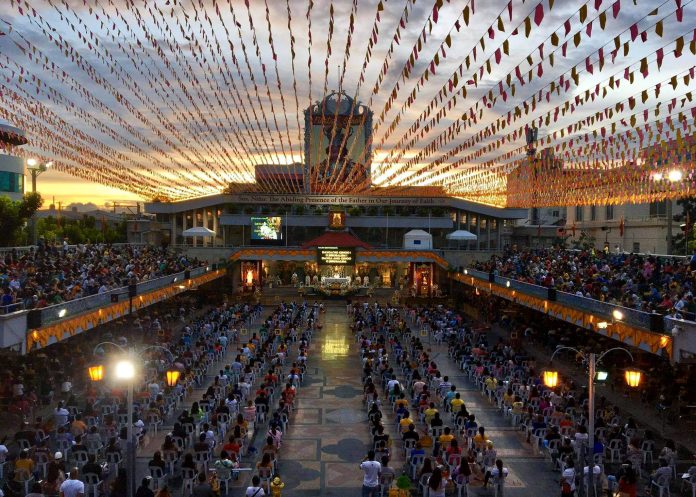The celebration of the annual “Sinulog” festival in honor of the Child Jesus in the central Philippines opened on Friday, January 8, with prayers to stop the spread of the new coronavirus disease.
The “Sinulog” or dance prayer, the oldest festival in the country, usually gathers up to two million devotees, including local and foreign tourists, when it culminates in the third week of January.
“Sinulog,” from the Bisayan word “sulog” or water current, depicts the forward-backward movement of water that is danced to the beat of drums.
Devotees would wave their hands in the air and shout “Viva Senor Santo Nino!” of “Hail to the Holy Child! and “Pit Senor!” short for “Sangpit sa Senyor (Call to the King).”
Aside from the religious aspect of the festival, the “Sinulog” is also famous for its street parties, usually happening at night before and at the night of the main festival.
This year, however, the celebrations have been subdued due to the pandemic.
“Pit Senyor, sa pandemic kini! (Call to the King, this is for the pandemic!)” shouted the lector during the first of the nine Masses before the actual day of the celebration on January 17.
“Pit Senyor,” responded the faithful, shouting, as they danced inside the Basilica Minore del Santo Niño de Cebu on Friday morning.
“We can’t see each other because we have face masks, but I am still happy to see all of you,” said Augustinian priest Pacifico Nojara, rector of the basilica.
The priest said the pandemic had brought “significant worries,” but “our faith in the Sto. Niño continues.”
“The flood can be stopped, but never our love for the Child Jesus,” said Father Nojara, adding that the coronavirus “cannot stop our love for the blessed Child.”
Father Nojara said the year 2021 is a “good year” for Filipinos because of the 500th anniversary of the arrival of the Child Jesus in the Philippines.
“We experience the pandemic, but this does not matter. What matters most is that this year, 2021, is a very special year for all of us,” he said.
“We are grateful because this faith has made us strong especially in times like this when we have nothing else but our faith in God that keeps us going,” said Father Nojara.
He said the image of the Child Jesus is a “beautiful icon of God’s love for all of us” and “a smile of faith.”
“The challenge for us is may we share this gift of love to our youth, our future missionaries of faith,” said Father Nojara.

The Catholic Bishops’ Conference of the Philippines has declared 2021 as the “Year of Missio ad Gentes” or “mission to the nations.”
For the first time in so many years, only a few people were allowed to attend the first day of the novena Mass on January 8 due to health restrictions.
Several hundreds of devotees were seen praying outside the church.
Church leaders have earlier announced the cancelation of traditional “Sinulog” activities like the “Walk with Jesus and Mary,” the “traslacion,” the “Penitential Walk,” and the fluvial procession that usually attracts millions of people.
The devotion of Filipinos, especially people from Cebu, to the Child Jesus has deep historical roots.
The image of the Holy Child was brought to the country by Magellan on April 14, 1521 as a gift to Queen Juana.
Juana’s husband, Rajah Humabon and some 800 natives, were also baptized, thus bringing for the first time Christianity in the country.
In 1565, when Spanish conqueror Miguel Lopez de Legazpi arrived in Cebu, a Spanish soldier found the image inside a burned house of a native.
Legazpi then named Cebu as the “City of the Most Holy Name of Jesus.”
Today, the image now known as Santo Nino de Cebu, is considered the oldest Christian relic in the country. It is enshrined in the basilica, one of the oldest churches in the country.









